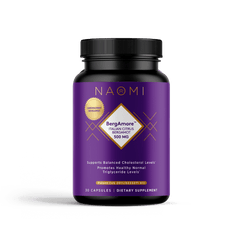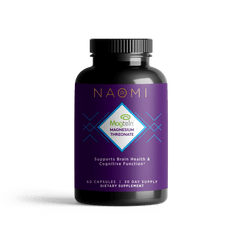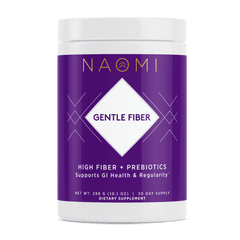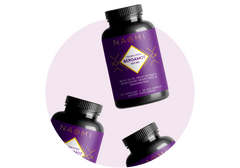Omega Confusion Clarified.
You know all too well by now that the topic of fat can potentially be hands down the most confusing subject debated in the world of nutrition. If you’ve read Glow15 or have watched the Real Skinny on Fat docuseries, you know that a diet rich in high-quality, nourishing fats really is the foundation of good health. My life’s work has evolved into a calling of sorts to share with you the incredible information I am so committed to curating from world-renowned experts, and the science behind using good fats to heal the metabolism. I’ve been struck with awe about one thing in particular in my discovery: omega fats are at the heart of why fat is so incredibly valuable and essential.
Omega 3, 6 and 9 Fatty Acids
First, let’s break down the difference between the three omega fats and why each is critical for human health. Each has its own distinct benefits, however, the right balance is essential, and consequently, the wrong balance can contribute to a long list of chronic diseases. I find that there is grave misunderstanding about how important each is, and if you have been stuck on this with all the conflicting info out there I don’t blame you!
Omega-3 Fatty Acids
Omega-3 fatty acids are perhaps the most well-known, particularly for their anti-inflammatory properties. They are known as “essential fatty acids,” as your body cannot make these polyunsaturated fatty acids on its own. The word “polyunsaturated” refers to its specific chemical structure, as “poly” means many and “unsaturated” refers to double bonds.
The most common forms of omega-3 fatty acids include eicosapentaenoic acid (EPA), docosahexaenoic acid (DHA) and alpha-linolenic acid (ALA). These fats play a key role in human cell membranes and carry out important functions such as increasing HDL cholesterol and reducing triglycerides, increased cognitive health, supporting a healthy weight, fighting inflammation, preventing neuro-degeneration, promoting healthy bones, balancing mood, and much more.
Sadly, a typical Standard American Diet is shockingly deficient in these fats, and many health experts believe this to be the true underlying reason for many modern-day diseases such as heart disease, diabetes, and obesity, among others. That is why my Glow15 program puts so much emphasis on sources of omega-3 fats such as wild salmon, alongside supplementation with BioAlaskan fish oil. For most people, getting enough omega-3 fats through diet alone can be a challenge.
Other excellent food sources include mackerel, sardines, anchovies, chia seeds, walnuts, and flaxseeds. Below you’ll learn more about how relying solely on plant sources to meet your omega-3 needs can be problematic.
Omega-6 Fatty Acids
Omega-6 fatty acids are also polyunsaturated, however, the last double bond contains six carbons. These fats are also essential, meaning you must get them from foods. While omega-6 fats have gotten a bad rap due to their potential to be pro-inflammatory, they are actually foundational to your health and important for energy production. Linoleic acid is the most common type of omega-6 and it can be converted into others such as arachidonic acid (ARA).
Both EPA (the omega-3 fatty acid mentioned earlier) and ARA are used to produce eicosanoids, but those produced by ARA are more prone to cause inflammation. This becomes a problem since the modern Western diet contains far more omega-6 fatty acids than necessary, which throws your omega-3 to 6 ratio way out of balance. Believe it or not, while the recommended ratio is 4:1 or 2:1, many western diets are as high as 50:1 or even 200:1! This is a very big problem.
Other types of omega-6 fatty acids that offer huge benefits to health include gamma-linolenic acid (GLA), which can be found in evening primrose oil and borage oil. Conjugated linoleic acid (CLA) has also been shown to reduce body fat and you can find it in meat and quality, full-fat dairy.
Omega-9 Fatty Acids
The least well known of the omega fats are certainly the omega-9 fatty acids, which are monounsaturated fats (such as those found in olive oil). They only have one double bond, and the most common of the omega-9 fatty acids is oleic acid. As opposed to the other omegas, the body can make these fats so they aren’t essential, and in fact, they are the most abundant fats in most of your cells.
Benefits of omega-9 fatty acids include increased insulin sensitivity, decreased inflammation and a reduction in blood triglyceride levels and very low-density lipoproteins (VLDL, aka “bad” cholesterol). One study found that a diet high in monounsaturated fats could decrease these markers by up to 22% in diabetics.
But Aren’t Omega-6 Fats Inflammatory?
It’s true, certain kinds of omega-6 fatty acids that are prevalent in the veins of modern-day processed food production and general use are very highly inflammatory. These polyunsaturated fatty acids are incredibly vulnerable and easily damaged by factors such as heat. However, it’s important to understand that while there are some fats in this group that are pro-inflammatory and should be avoided at all costs, others are anti-inflammatory and actually quite important to include in the diet. In fact, high quality omega-6 fatty acids are essential for balanced health and hormones.
It all comes down to ratios and balance. The ratio I touched on above of omega-3 to omega-6 fatty acids is key. Since the body must obtain omega-3 fats from foods (making them essential fatty acids), it’s far too easy for this omega-3 to 6 ratio to become out of whack. When you start down the path of having a much higher ratio of omega-6 to 3 (when in reality it should be the other way around), and when the quality of your omega-6 fats are low, this is when you enter the danger zone of increased risk to develop chronic diseases and struggle with weight due to the inflammatory response from these fats.
Another detrimental reality in the world of omega-6 fats is their production and processing. For example, even fats like sunflower oil can potentially be healthy, however, the reason they are not recommended is often due to the fact that it’s nearly impossible to find them used properly in contemporary culinary applications or in products on supermarket shelves. Again, these oils are highly vulnerable to the elements (heat, light air, etc.) and can denature very quickly, leading to the consumer eating oxidized and rancid fats and the myriad of health dangers that this comes with.
The ultimate goal is to achieve a healthy balance (ratio) of omega-3 fatty acids to omega-6 fatty acids while being mindful not to consume highly processed, oxidized polyunsaturated fats.
Can I Get My Omega-3 Fatty Acids From Plants?
The truth is that relying solely on omega-3 fatty acids from plant sources can be tricky. Many of us have inefficient conversion of the ALA to DHA and EPA fatty acids. Some women are especially inefficient due to genetic factors making your body unable to make these conversions. For vegan or vegetarians, an algae oil along with a high-quality blend such as Udo’s 3-6-9 can be extremely helpful for ensuring that omega-3, 6 and 9 ratios remain in balance, and you can simply add a tablespoon or two daily to salads, smoothies or as a dip.
The Best Food Sources for a Balanced Omega Profile
Aside from eating the types of fatty fish low in mercury that I discussed above 2-3 times per week, it’s also important to consider a high-quality fish, krill or algae oil as well for a higher omega-3 intake. If you do take a fish oil, be absolutely sure it is third-party certified for purity, and that it is in the triglyceride form. Some fish oils are so contaminated that they do more harm than good, so know your sources. BioAlaskan fish oil is my top recommendation because I saw firsthand how the oil was extracted using the purest methods leaving zero room for toxicity or oxidation.
Whether you are new to a Glow15 lifestyle or you’ve been focusing on a balance of omega-3, 6 and 9 fatty acids for many years, checking in with your dietary sources of each and being sure your ratios are balanced is a true game-changer for your health and wellness. I know mine was transformed by this information, and I hope yours can be, too.















